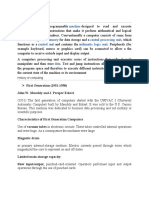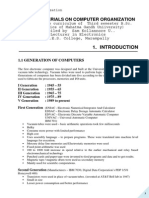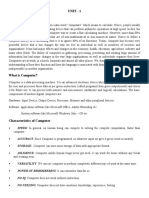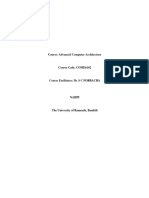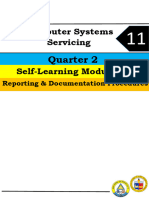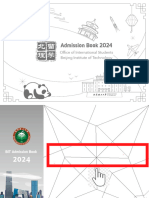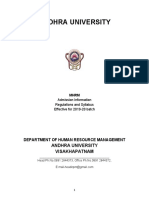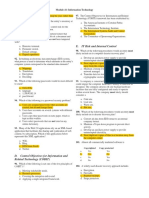0% found this document useful (0 votes)
13 views27 pagesComputer Applications
The document provides an overview of computer applications, defining a computer as an electronic device that processes data and produces information. It outlines the history, generations, key characteristics, and limitations of computers, highlighting advancements from early calculating devices to modern microcomputers. Key features include speed, reliability, and versatility, while limitations encompass issues like cyber threats and health problems.
Uploaded by
tylertee319Copyright
© © All Rights Reserved
We take content rights seriously. If you suspect this is your content, claim it here.
Available Formats
Download as PPTX, PDF, TXT or read online on Scribd
0% found this document useful (0 votes)
13 views27 pagesComputer Applications
The document provides an overview of computer applications, defining a computer as an electronic device that processes data and produces information. It outlines the history, generations, key characteristics, and limitations of computers, highlighting advancements from early calculating devices to modern microcomputers. Key features include speed, reliability, and versatility, while limitations encompass issues like cyber threats and health problems.
Uploaded by
tylertee319Copyright
© © All Rights Reserved
We take content rights seriously. If you suspect this is your content, claim it here.
Available Formats
Download as PPTX, PDF, TXT or read online on Scribd
/ 27


